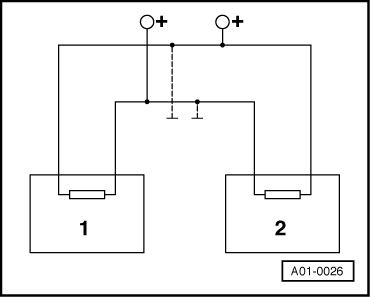A4 Mk1
|
CAN bus
Test the CAN bus system
It was advised in the fault table to check the bus:
A function fault refers to a fault that does not directly affect the bus system but affects the functionality of a system in some other way. For example, this may be a defective sensor. The result is that the sensor signal cannot be prepared for transferring on the bus system. A functional fault of this nature has a direct effect on the bus system. Communication with the other control units that require the sensor signal concerned is affected. Is there a function fault?
All function faults have been rectified.
There are two different cases when looking for faults in the bus lines:
The communication between two control units is carried out via a "Two-line bus system". |
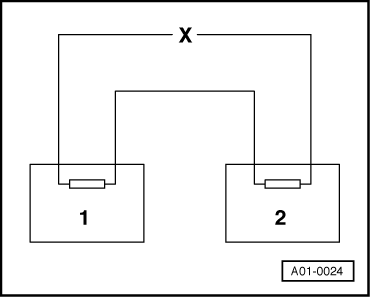 |
|
=> Current Flow Diagrams, Electrical Fault-finding and Fitting Locations binder |
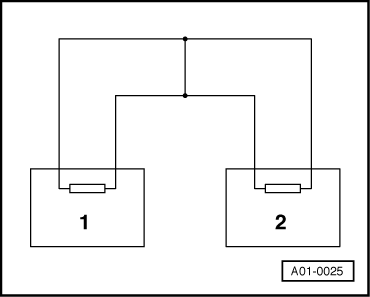 |
|
=> Current Flow Diagrams, Electrical Fault-finding and Fitting Locations binder |
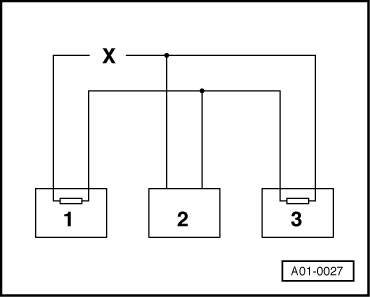 |
|||||||||
=> Current Flow Diagrams, Electrical Fault-finding and Fitting Locations binder
Example 2: The faults stored in the fault memories indicate that the control unit 2 does not communicate with control units 1 and 3. |
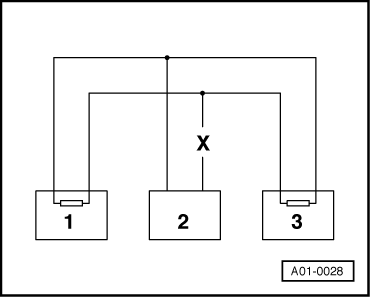 |
|||||||||
=> Current Flow Diagrams, Electrical Fault-finding and Fitting Locations binder
Example 3: The faults stored in the fault memories indicate that sending or receiving is not possible in any of the control units. |
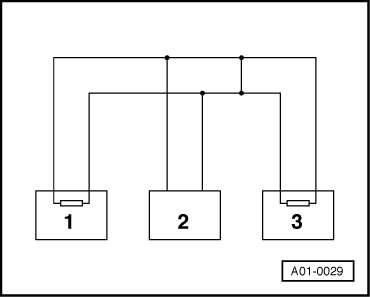 |
|||||||||
=> Current Flow Diagrams, Electrical Fault-finding and Fitting Locations binder |
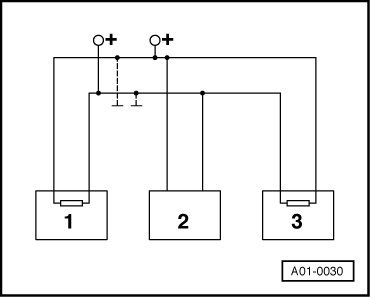 |
|
|

